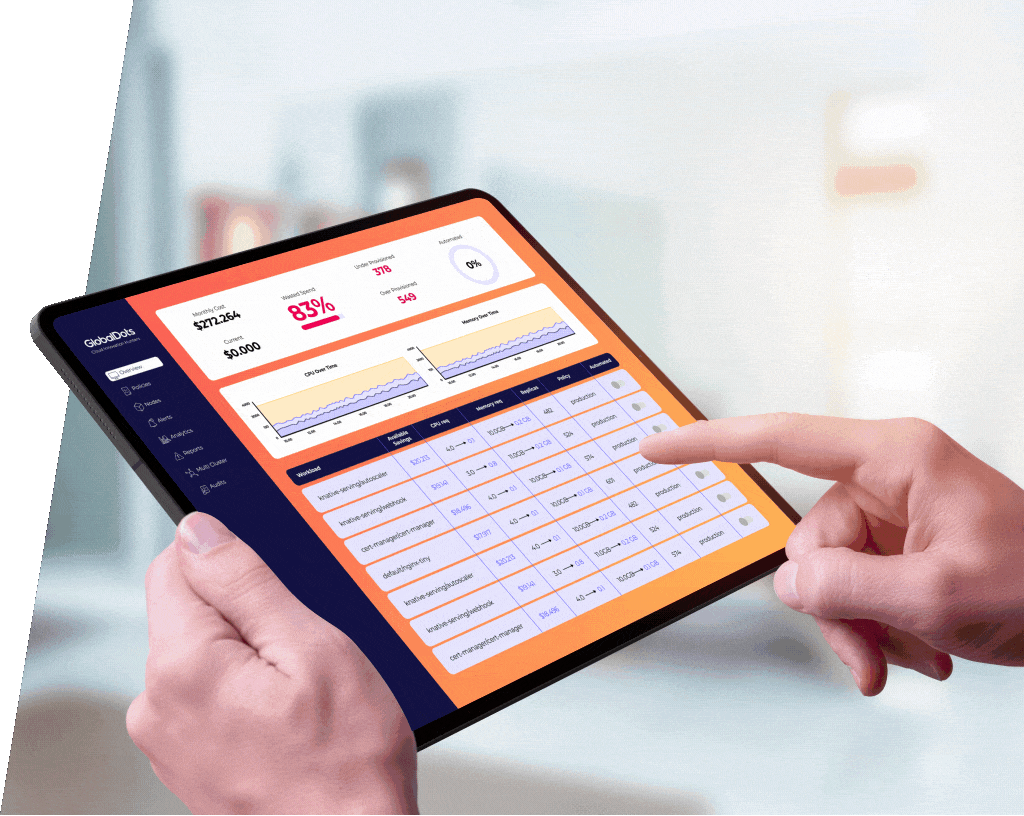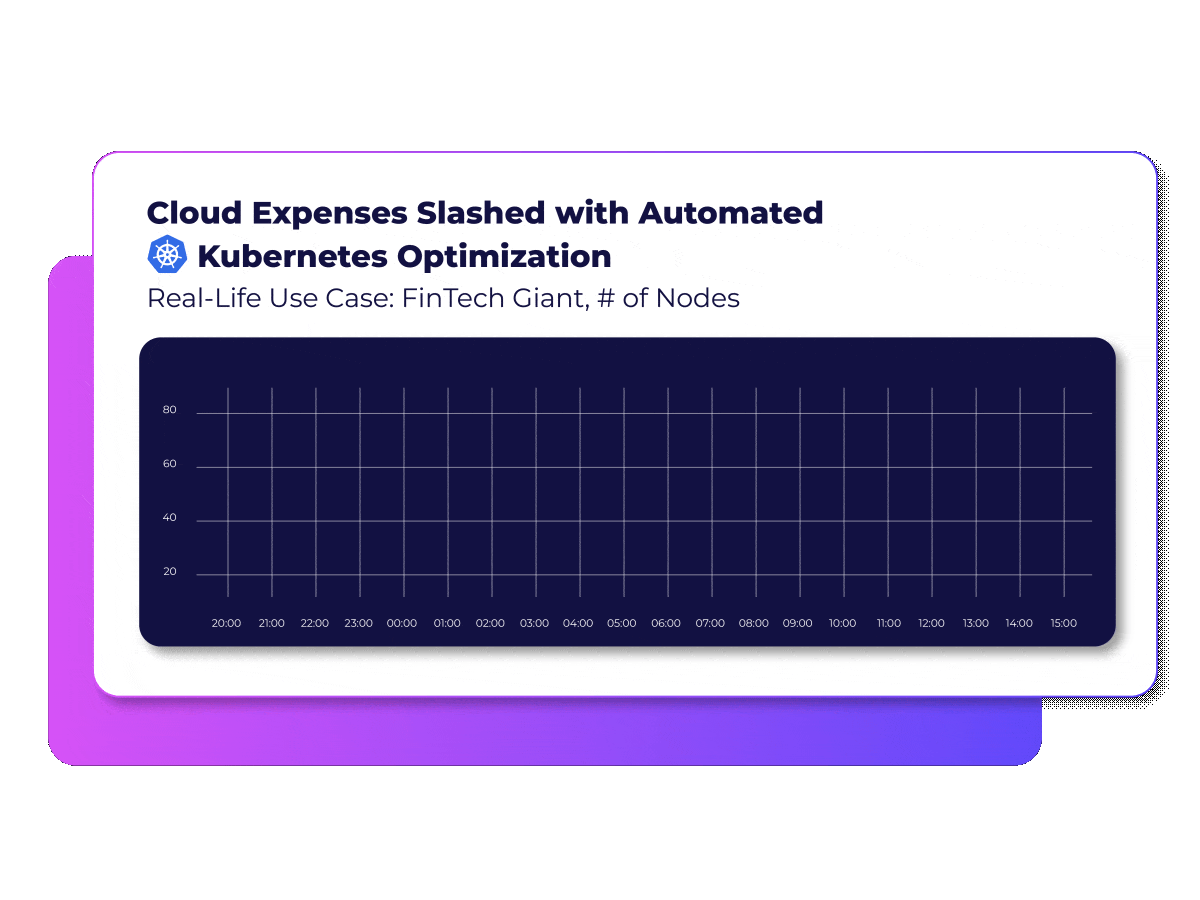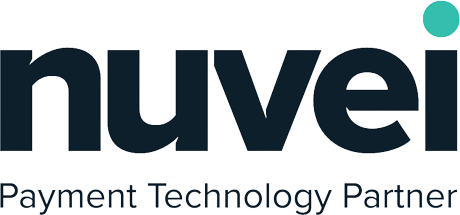Automated Kubernetes Optimization
Reduce Kubernetes costs by up to 80%, ensure SLAs and save precious DevOps time from repeated manual configurations

-
Frees DevOps from repetitive configurations
Eliminate repeated ongoing resource configurations cycles.
-
Pay Only for What You Save
Reduce Kubernetes costs by up to 90% – instant return on investment
-
All-in-One Platform
Single platform to optimize all Kubernetes containers and any resource kind.

Case Study: How IronScales Reduced K8s Costs by 21%

Kubernetes Resource Management Platform
We at GlobalDots, are always on the hunt for new innovative solutions. Our FinOps comprehensive offering is based only on high impact solutions by industry leaders and new cutting-edge startups, risk free- committed to cut your cloud costs while adding relevant solutions to your tech stack, paid only from your positive savings, while reducing complexity and operational resources.

FAQs
-
What is Kubernetes optimization?
Kubernetes optimization involves several strategies to enhance efficiency and reduce costs within Kubernetes clusters. This includes rightsizing pods to match resource requirements more accurately, rebalancing nodes to ensure optimal utilization, and leveraging spot instances for cost savings. By implementing these practices, organizations can maximize resource utilization, minimize wasted capacity, and achieve significant cost reductions in their Kubernetes environments.
-
How do I make Kubernetes faster?
Optimizing Kubernetes pods involves several key strategies to ensure efficient resource usage and cost-effectiveness within the cluster. Firstly, organizations can utilize automation tools to analyze pod resource requirements and rightsize them accordingly, ensuring that each pod receives the appropriate amount of CPU and memory. Additionally, automation tools can monitor pod utilization and scale resources dynamically based on demand helps to prevent over-provisioning and optimize resource allocation. Nodes within the cluster can be rebalanced to distribute workloads evenly, maximizing node utilization and minimizing idle resources. Furthermore, leveraging spot instances through automation can significantly reduce costs by taking advantage of unused capacity while maintaining reliability and availability. Overall, a combination of rightsizing, dynamic scaling, node rebalancing, and spot instance utilization, facilitated by automation tools, enables organizations to optimize Kubernetes pods for efficiency and cost savings.
-
How do you optimize Kubernetes resources?
Optimizing Kubernetes resources involves leveraging automation tools to analyze performance metrics and rightsize pod requests based on actual usage, ensuring efficient resource utilization. Pods are placed strategically across nodes to balance workloads effectively, maximizing node utilization and maintaining cluster health. Additionally, benchmarking different instance types helps identify the most cost-effective options for running Kubernetes workloads, further optimizing resource allocation and minimizing costs.
-
How do you optimize Kubernetes costs?
Optimizing Kubernetes costs involves implementing a combination of strategies facilitated by automation tools. Firstly, rightsizing pods based on actual resource usage ensures efficient allocation and minimizes wasted capacity. Secondly, strategically placing pods across nodes balances workloads, maximizing node utilization and minimizing idle resources. Additionally, leveraging spot instances and benchmarking different instance types helps identify the most cost-effective options, further reducing overall Kubernetes expenses.
-
What architecture automatically optimizes for cost in Kubernetes?
An architecture that automatically optimizes for cost in Kubernetes typically involves a combination of tools and practices. These may include:
- *Auto-scaling*: Automatically adjusting the number of pods based on workload demand to avoid over-provisioning and reduce costs during low-traffic periods.
- *Rightsizing*: Dynamically adjusting resource requests and limits for pods based on actual usage to avoid overallocation of resources and optimize cost.
- *Spot instances*: Leveraging spot instances or preemptible VMs for non-critical workloads, which can significantly reduce costs compared to on-demand instances.
- *Cost monitoring and optimization tools*: Implementing tools that continuously monitor resource usage and provide insights into cost optimization opportunities, helping organizations make informed decisions to minimize Kubernetes expenses.
















 Frees DevOps from repetitive configurations
Frees DevOps from repetitive configurations
 Pay Only for What You Save
Pay Only for What You Save